It’s natural to feel nervous about the current state of the economy, but don’t let that understandable anxiety get in the way of your ability to identify and capitalize on the unique opportunities that always accompany periods of disruption.
While the experts debate whether or not we’re in a full recession, you need to look to the data to understand where your customers are, where there is whitespace in the market, and how to make the most of this moment by building a stronger connection with consumers in their time of need and maintaining (or even growing) your marketing budget.
There are three key things to keep in mind to stay the course and prepare your brand to take advantage of the substantial silver linings of an economic climate that will see competitors cutting spend and consumers re-examining their purchase priorities.
1. Think long-term instead of making strategic decisions from a place of fear
Let’s start with some real talk. Consumer sentiment about the economy is close to an all-time low and concerns about inflation are extremely high. Your customers (and potential customers) are reacting to this reality; as a result, many of your competitors are about to make a potentially fatal mistake.
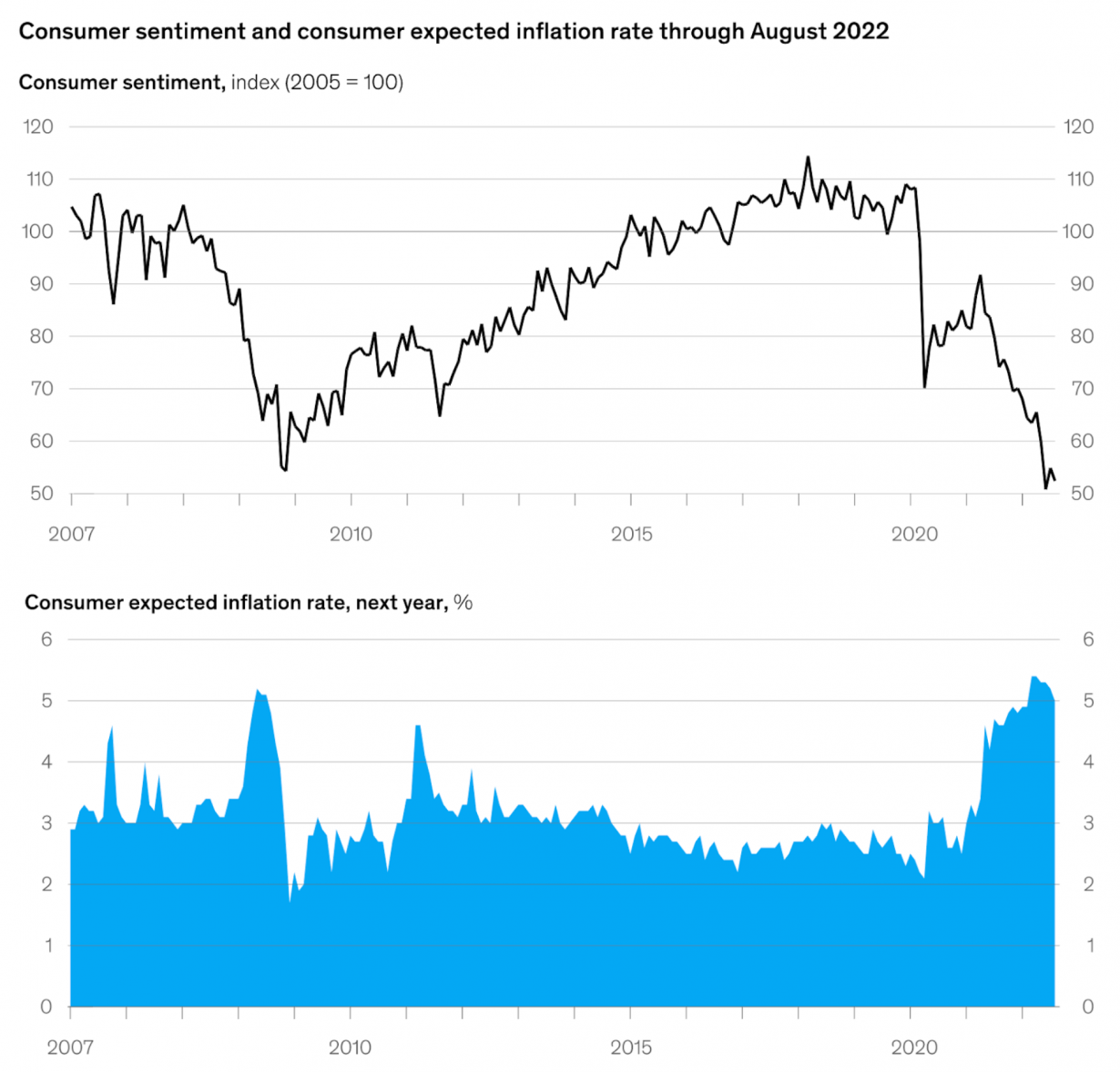
Source: McKinsey/University of Michigan
They’re going to forget to consider the longer-term effects of the decisions they’re making right now. A fair amount of business leaders are going to forget about some of the essential components that will help a brand stand out to consumers at a time a business needs to make an even more powerful case than ever before to earn those dollars.
One enlightening example of this level of short-sightedness: according to a recent KPMG survey, 59% of US CEOs are pausing or reconsidering their ESG efforts, which guide corporate investments in environmental sustainability, philanthropy, and health and safety issues, as a cost-cutting measure in a bid to buoy short-term profitability.
On paper, that might make sense. But it flies in the face of consumer preference data. A new index from IRI and NYU Stern Center for Sustainable Business showed that in September 2022, well into the inflationary period, 93% of consumers have maintained or increased their sustainable purchase habits over the last year and 77% of consumers believe sustainability is important when selecting products to buy, up 8% YoY.
In fact, the index indicated that sustainably marketed products grew 2.7 times faster than conventionally marketed products in the same category.
If you can combine the right product with the right promotion and the right value alignment, you will open up substantial potential for growth in both the short and long term.
Even as consumers are looking for deals, they also want to make those purchases from brands that align with their values—that’s not less important when money is tighter, it’s more important.
If you’re only looking at next quarter, you’re missing a massive chance to forge meaningful connections with your existing customers and new audiences that will put you ahead and capture market share, even as your competition drops the ball.
2. Leverage consumer data and audience segmentation to advertise with empathy
If the pandemic taught us anything about marketing, it’s the importance of really understanding where your customers are and how disruptions might be affecting different groups of consumers. If you are monitoring who is buying what, what they need to know, where they’re researching and shopping, and how they want to receive information, you can move fast to respond to new changes in the market with the right blend of messaging and creative that truly meets the customer where they are.
According to Morning Consult’s monthly financial well-being scale, which measures how 2,200 US adults view their personal financial situation, the latest score for the average U.S. adult continued a four-month decline, hitting 48.5 in September, down 1.77 points YoY.
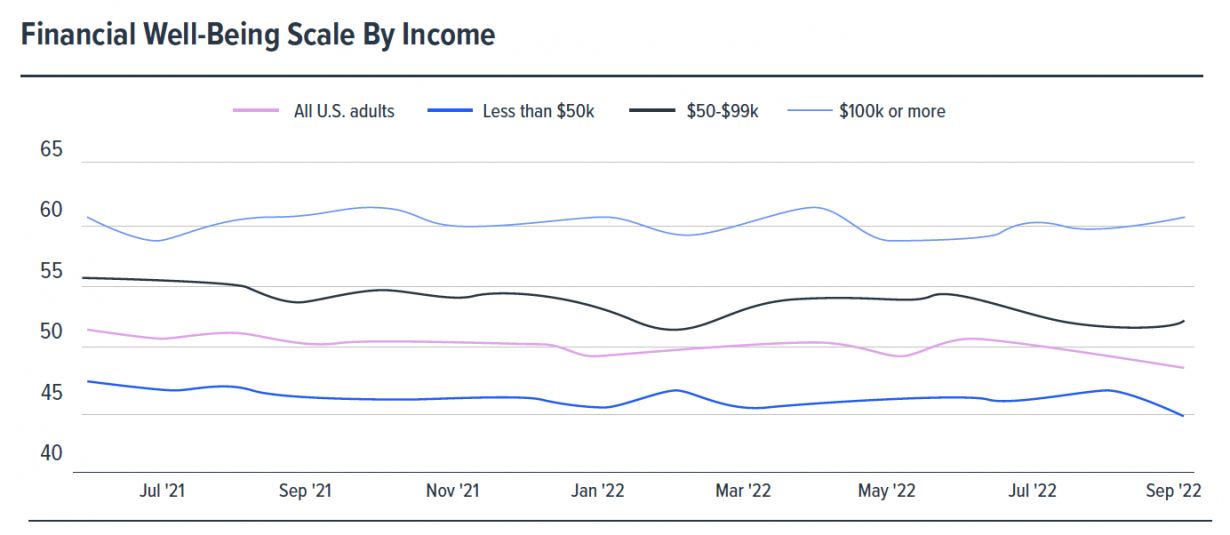
Source: Morning Consult
Remember, not all customers are the same. The same data set from Morning Consult indicates that households earning less than $50k are bearing the brunt of the negative financial impact. Breaking down the data into generational segments reveals that Gen Xers and millennials reported lower levels of financial well-being against higher scores for baby boomers and Gen Z adults. Women are also feeling less financially secure than men by a major margin, with a significant decline of 1.41 points from July to August.
You need to combine these macro consumer data points with your own first-party data to understand each of your audience segments and assess what they need from your brand.
That might break down across income, market, geography, or other demographic considerations, or purchase behavior by channel, or other specific behavioral signals. Those insights should inform your media mix, creative angle, and pricing/promotional strategies.
Cultivating a sense of empathy that’s reflected in both your larger strategy and specific messaging is critical to not just staying in the consideration set when people are tightening their budgets, but earning the purchase when they’re ready to buy or even splurge.
3. Learn from the past to open up an insurmountable lead over your competition
We know that many businesses have a knee-jerk reaction to economic uncertainty and a potential recession: to slash budgets and get some short-term insulation from potential pain. But that path only leads to an expensive and difficult-to-recoup loss in market share.
Don’t believe us? Look no further than the data from the 1981-1982 and 2008 recessions to understand what you’re giving up if you decide to pull back now.
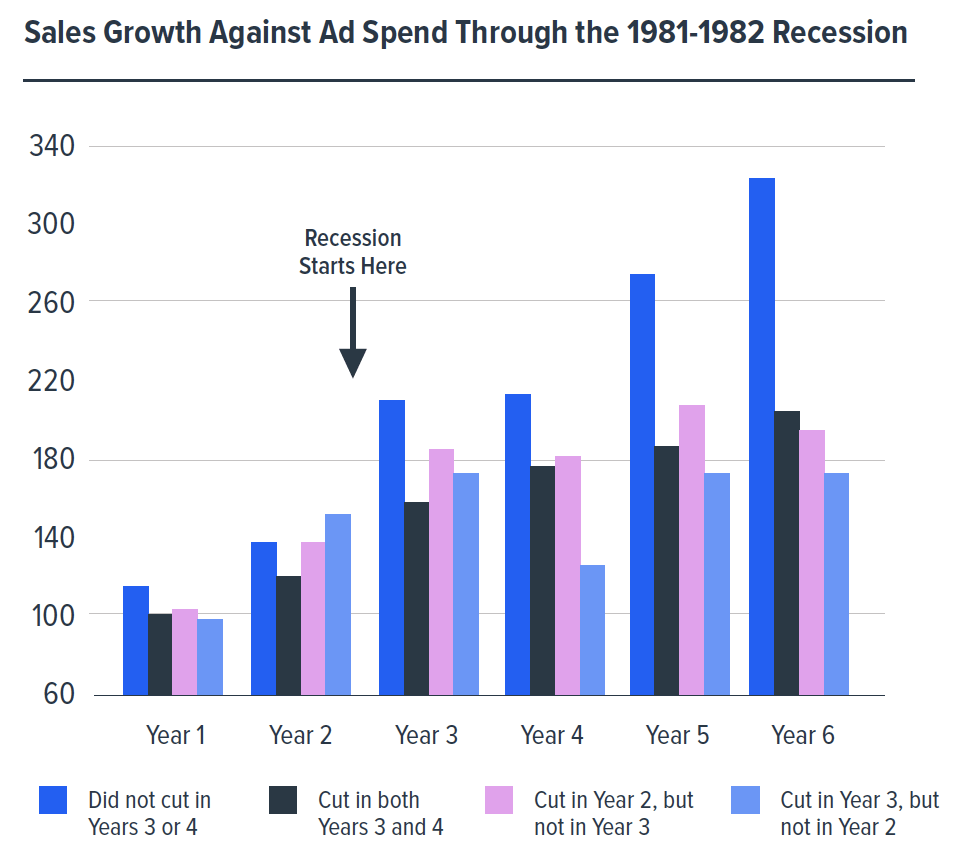
Source: McGraw-Hill Research
According to a famous analysis of the sales growth and ad expenditures of 600 companies before, during, and after the 1981-1982 recession by McGraw-Hill Research, sales of companies that were aggressive recession advertisers rose 256% over those that cut their ad spend, just three years after the recession ended.
That spend can’t just be focused on direct response channels; you need to earn your customers’ dollars across the entire customer journey with a full-funnel strategy.
The legendary Peter Field, one of the “Godfathers of Effectiveness” in marketing, points to results from the 2008 recession to prove the point. He used IPA data to group companies by their Excess Share of Voice (ESOV), the difference between a brand’s share of voice and their share of market, then examined their performance.
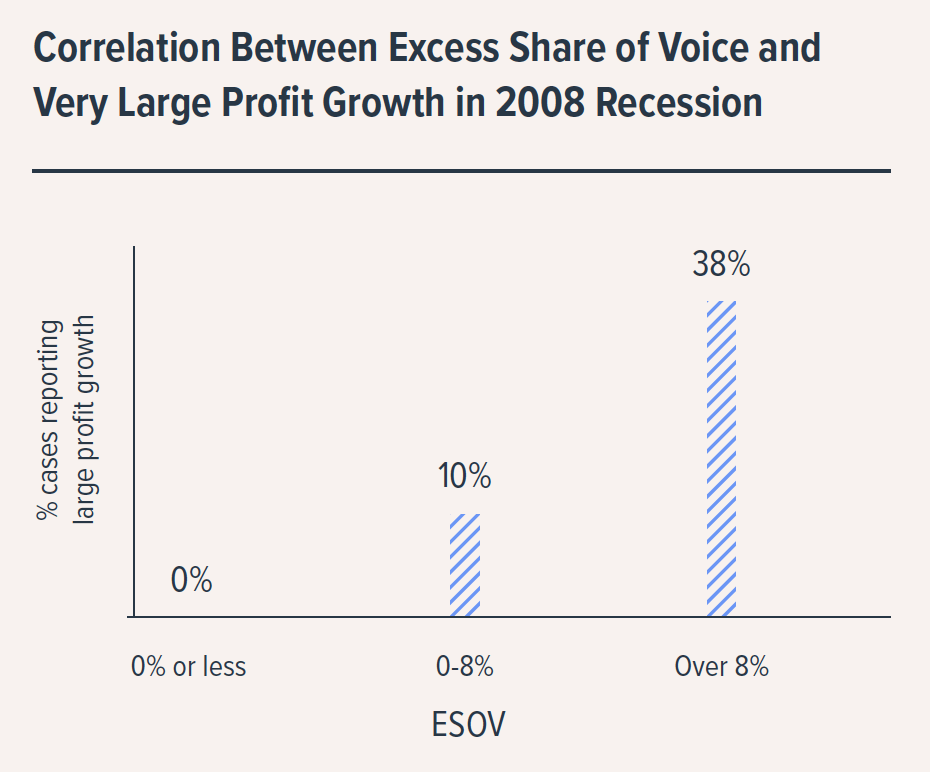
Source: Peter Field
Turning up brand spend to capture additional share of voice through a recession can lead to major profitable growth and correlates with increased market share. Going dark, however, is an almost surefire way to weaken your business in the long term.
In a recession, fortune favors the bold in terms of both overall growth and efficiency.
Recessions actually represent a major low-cost growth opportunity for businesses that don’t get in their own way, because many competitors will either leave the field or minimize their efforts. This can lead to truly transformative growth that springboards your business to the top of the competitive heap.





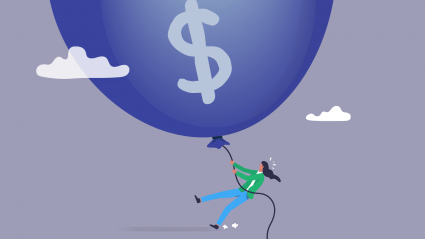

Responses